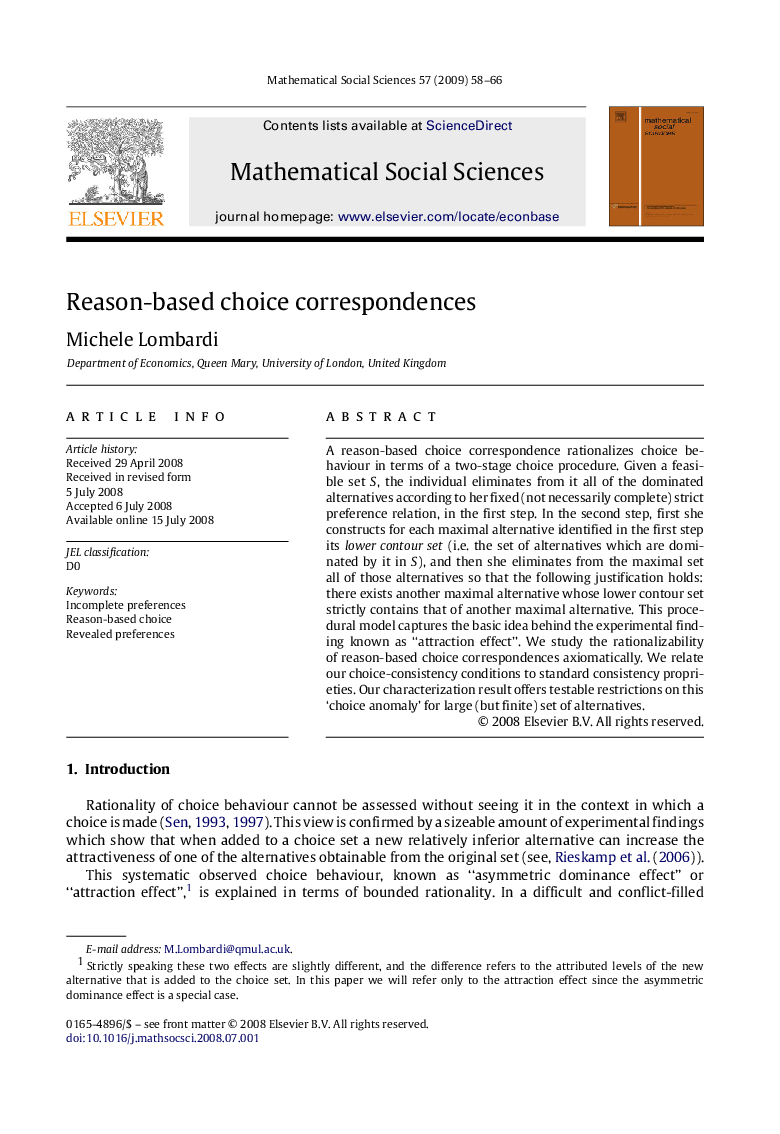| Article ID | Journal | Published Year | Pages | File Type |
|---|---|---|---|---|
| 972788 | Mathematical Social Sciences | 2009 | 9 Pages |
A reason-based choice correspondence rationalizes choice behaviour in terms of a two-stage choice procedure. Given a feasible set SS, the individual eliminates from it all of the dominated alternatives according to her fixed (not necessarily complete) strict preference relation, in the first step. In the second step, first she constructs for each maximal alternative identified in the first step its lower contour set (i.e. the set of alternatives which are dominated by it in SS), and then she eliminates from the maximal set all of those alternatives so that the following justification holds: there exists another maximal alternative whose lower contour set strictly contains that of another maximal alternative. This procedural model captures the basic idea behind the experimental finding known as “attraction effect”. We study the rationalizability of reason-based choice correspondences axiomatically. We relate our choice-consistency conditions to standard consistency proprieties. Our characterization result offers testable restrictions on this ‘choice anomaly’ for large (but finite) set of alternatives.
